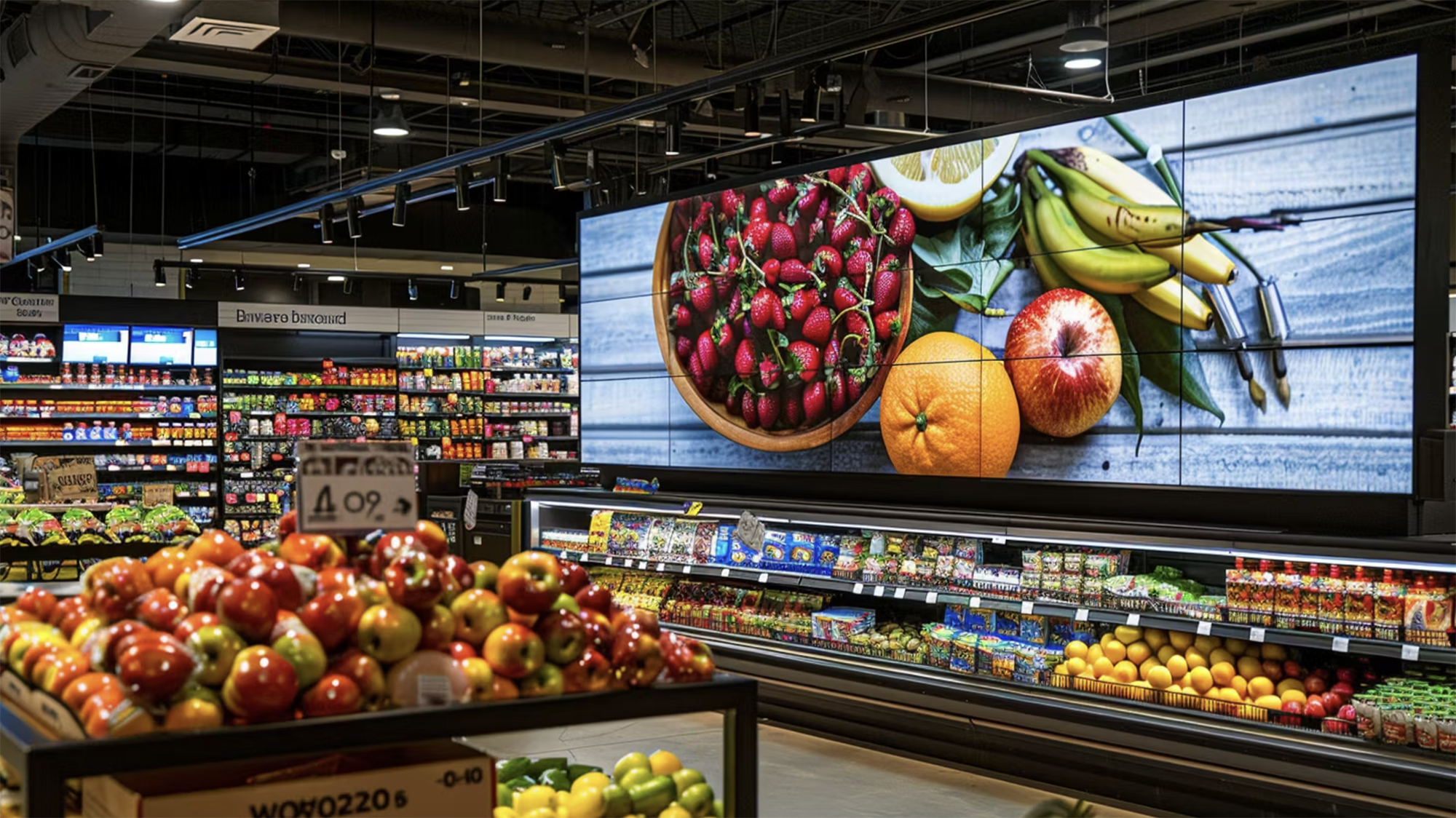Unlock Cost Savings With Energy Efficient Solutions

At a Glance
- Grocers account for approximately 9% of total energy consumption in commercial buildings.
- Optimizing refrigeration systems can lead to up to 24% energy reduction for grocers.
- Implementing strategic visible display cases can ensure customer visibility and result in substantial refrigeration load reductions, leading to energy savings of up to 40% over 24 hours.
- The article highlights various innovative solutions aimed at enhancing energy efficiency for grocers.
Sustainability is a hot top across industries and is a vital component of grocer’s short- and long-term strategic roadmaps. Grocery stores are responsible for approximately 9% of total energy consumption in commercial buildings across the United States, presenting a significant opportunity to drive energy efficiency and combat climate change. Among the major contributors to energy consumption are refrigeration, lighting, heating, and cooling systems, making these areas essential targets for positive impact.
Energy efficiency serves as a competitive differentiator and a crucial strategic solution for grocers, providing cost savings without compromising product quality. Beyond the financial advantages, adopting sustainable practices positively impacts employee well-being, enhances customer shopping experiences, and positions stores as advocates of environmental change.
In an article based on energy saving opportunity for grocers of the energy efficiency series highlighted the importance of energy efficiency in grocery stores. In Part 2, we delve deeper into innovative solutions that lead the way toward a sustainable future.
Optimizing Refrigeration Systems
Efficient refrigeration solutions can yield up to 24% energy reduction compared to standard practices. Supermarkets can focus on efficient refrigeration technologies that not only minimize energy use but also promote environmental sustainability. Natural refrigerants offer eco-friendly alternatives to traditional synthetic refrigerants, reducing environmental impact while maintaining efficient cooling performance.
Energy-Saving Strategies for Display Cases
To balance visibility for customers and energy efficiency, supermarkets can implement strategic measures. Clear plastic curtain strips retain cool air within the display cases while allowing customers to access and view products. Night curtains made of cloth or plastic conserve energy by limiting cool air loss during non-business hours. Aluminum display-case shields offer a substantial reduction in refrigeration load, contributing to energy savings of up to 40% over 24 hours.
Harnessing Free Cooling Techniques
Implementing "free cooling" techniques can be a game-changer for energy efficiency in refrigeration systems. These techniques take advantage of lower ambient temperatures to reduce refrigerant temperatures by adjusting the head pressure of the vapor coming out of the compressor. Supermarkets can save energy by using an expansion valve that operates at lower pressures and flow rates. Floating head pressure savings typically range from 3% to 10%, as reported by the Washington State University Energy Extension Office. Employing refrigeration controls like floating suction pressure control (FSPC) and floating head pressure control (FHPC) can lead to substantial annual energy savings ranging from 30,000 to 60,000 kWh.
Energy Efficiency Programs and Technologies
Optimizing energy usage through participation in energy efficiency programs and the adoption of innovative technologies can have significant benefits. Supermarkets can take advantage of refrigeration efficiency programs, which offer free assessments and rebates to optimize and enhance their refrigeration systems. By implementing refrigeration battery solutions from leading suppliers, supermarkets can effectively reduce electricity bills by up to 20%.
Utilizing Waste Heat Recovery
Waste heat recovery systems capture refrigeration equipment's waste heat, repurposing it to produce hot water. This provides additional energy savings for heating needs. The waste heat recovered from a 7.5-horsepower compressor can supply all the hot water needs for a midsize supermarket's kitchens and bathrooms.
LED Lighting for Energy Savings
Switching to LED lighting reduces energy usage by 30% compared to fluorescents. LED lighting provides improved light quality and is preferred by shoppers in cold cases and freezer sections. Shoppers highly favor LED freezer lighting, with 86% preferring it over other light sources at full power and 68% still appreciating it when dimmed. LEDs are especially advantageous when placed near merchandise, providing excellent color rendering and making products more appealing to customers. Grocers are increasingly using LEDs in produce departments and throughout the store to enhance the overall shopping experience and increase sales.
Dehumidification for Energy Efficiency
Dehumidification reduces the refrigerator's internal temperature rise caused by moisture, leading to less frequent compressor operation and lower electric use. Desiccant dehumidification using natural gas instead of electricity is a cost-effective solution that eliminates odors and bacteria in moist environments.
Shelf-Edge Technology for Optimal Cooling
Shelf-edge technology with precise temperature and humidity controls prevents inadvertent thawing and refreezing, ensuring product quality and energy efficiency. Moreover, this technology saves up to 33% in energy costs by effectively controlling and retaining cold air inside refrigerated display cases.
Transitioning from HFCs to Natural Refrigerants
Apart from energy consumption, the refrigerants utilized in grocery stores have significant global warming impacts. Conventional refrigerants like hydrofluorocarbons (HFCs) have long been recognized for their high global warming potential. Replacing conventional refrigerants like HFCs with natural refrigerants, such as eCO2 made from sugar beet waste, significantly reduces global warming impact and enhances energy efficiency.
Supermarkets can unlock potential energy savings of up to 26% through energy audits, helping expand traditionally slim profit margins. By wholeheartedly embracing these energy efficiency solutions, grocery stores become powerful drivers of a greener and more prosperous future, ensuring environmental preservation and sustainable growth for generations to come.


.png)





.png)


